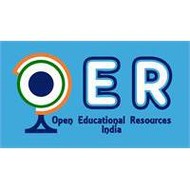
(View Complete Item Description)
In the electrical engineering, solid-state materials and the properties play an essential role. A thorough understanding of the physics of metals, insulators and semiconductor materials is essential for designing new electronic devices and circuits. After short introduction of the IC fabrication process, the course starts with the crystallography. This will be followed by the basic principle of the quantum mechanics, the sold-state physics, band-structure and the relation with electrical properties of the solid-state materials. When the material physics has been throughly understood, the physics of the semiconductor device follows quite naturally and can be understood quickly and efficiently. Study Goals: The student can 1) determine the crystal structure, the density of atoms and the Miller indices of a crystal, 2) apply Schrodinger's wave equation to various potential functions and derive a probability of finding electrons, 3) discuss the concept of energy band formation and difference of material properties in terms of the band, 4) derive the concentrations of electron and holes with a given temperature in terms of Fermi energy, and 5) can discuss drift, diffusion and scattering of carriers in a semiconductor under various temperature and impurity concentrations.
Material Type:
Lecture Notes,
Reading
Author:
Dr. R. Ishihara




















